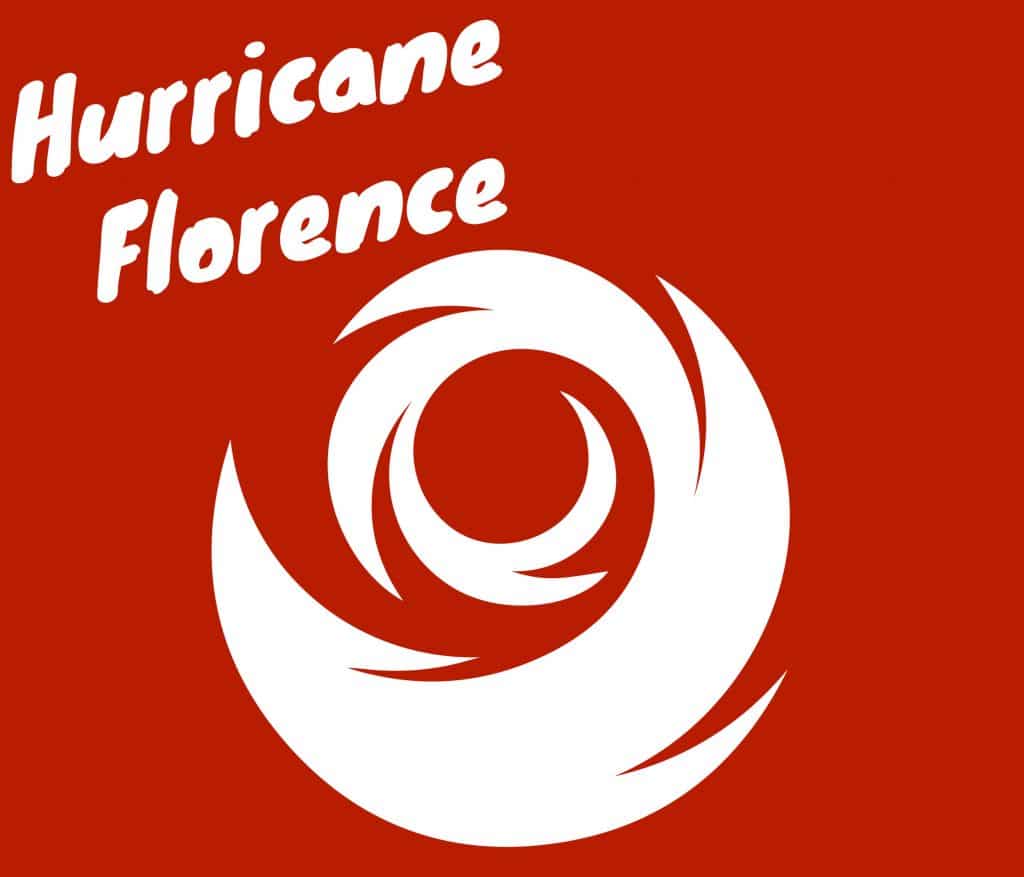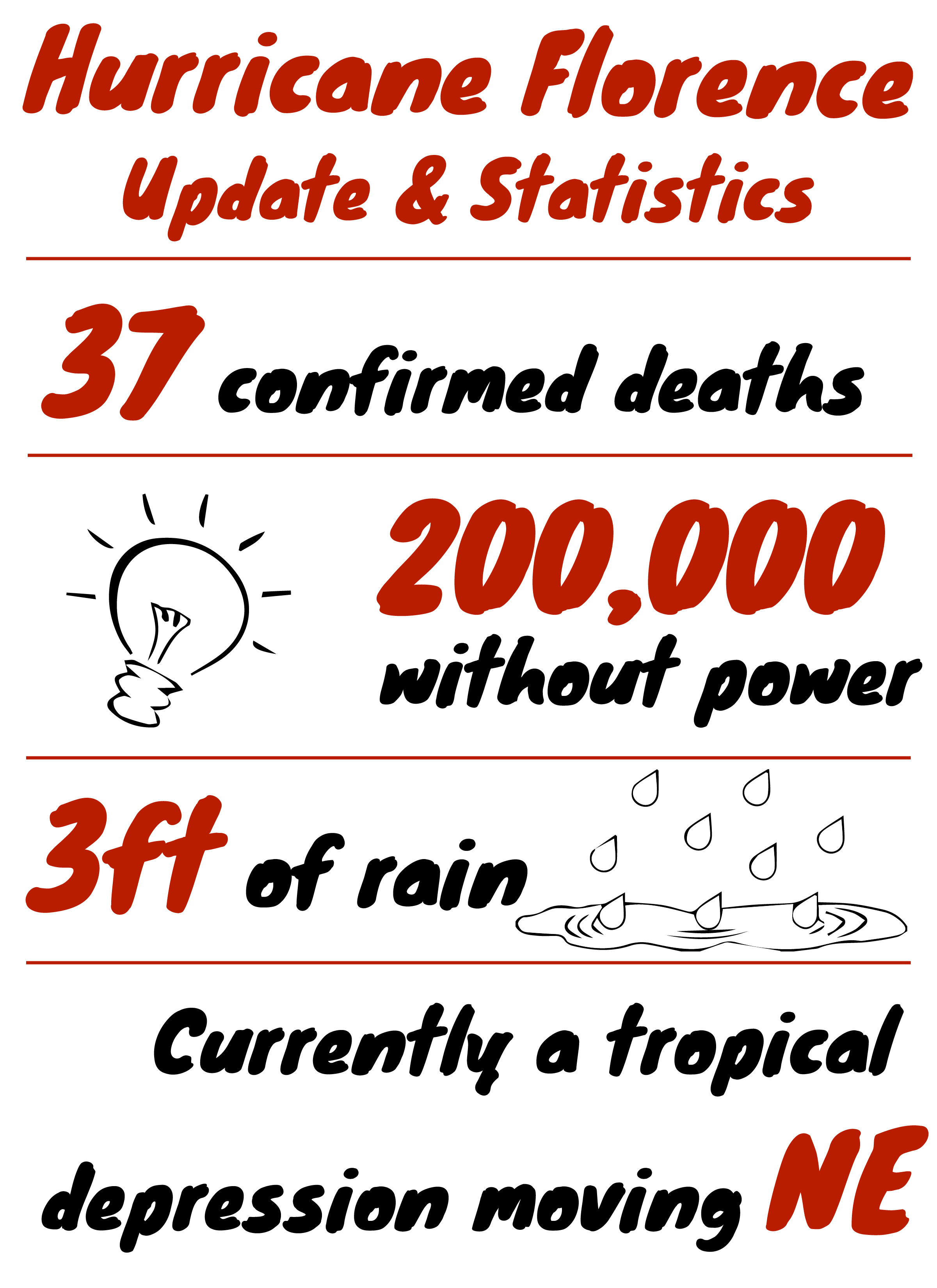
More than a hurrication: Florence devastates the Carolinas
Lane Koch, Associate Writer
It has been a trying couple of weeks for the Carolinas as hurricane Florence came and is now tapering off along the coast and border of the states.
As the category 4 hurricane approached, with stronger winds and larger mass than that of Hugo 29 years prior, many in the track of the storm evacuated to areas farther inland. A great deal of schools and universities cancelled their classes or closed the university.
North Greenville university was among the schools that chose to cancel classes.
“Classes have been canceled to give students the opportunity to make preparations for travel, ahead of the hurricane’s arrival and to anticipate delays in return to campus”, NGU President Dr. Gene C. Fant, Jr. was quoted in an email sent to the entire campus.
As NGU was fairly safe outside of the storm’s path, the school opened its doors for student’s families to find shelter.
For many students, the opportunity for their family to find shelter with them was a welcome invitation. “Having my family up here during the hurricane gave me piece of mind knowing they were safe.” said JJ Sherman, Junior Marketing Major.
“We had 41 people from the coast seek shelter from the storm”, according to Billy Watson vice president of Student Life.
Many breathed a sigh of relief as the storm lost power in its approach and was downgraded to a tropical storm.
But as relief came for individuals farther inland, many of the refugees were left pondering the state their homes and businesses would be in when they returned. Reports continued to warn people not to take the storm lightly as a drop-in speed and power meant a great deal of rain in certain areas.
And they were right.
Hurricane Florence resulted in 10 trillion gallons of rain over 8,820 square feet causing record setting flooding and damage to a great deal of homes and businesses. Wind caused road closures due to fallen trees and over 200,000 were left without power. As of today, 42 people have lost their lives as a result of flooding and wind damage.
The greatest issue is the rain that has landed traveling back to the coast and extending the floods in the coastal areas.
Sherman is acutely aware of the threat, “My family lives in Pawleys Island, South Carolina. They made it back safe with no damage to our homes but now are battling flooding from the two rivers that surround us.”
A myriad of government organizations and NGO’s were enacted to help those displaced with shower units, food, clothes, and clean water.
Units of the National Guard were called up in response sent to help with those unable to evacuate. The Red Cross rose and began assisting those affected.
The Federal Emergency Management Agency (FEMA) opened disaster relief centers as resource even after the hype from the storm has died.
But recovery is a marathon, not a sprint as we have seen in both Texas and Puerto Rico. People will be feeling the echoes of this event for some time.

